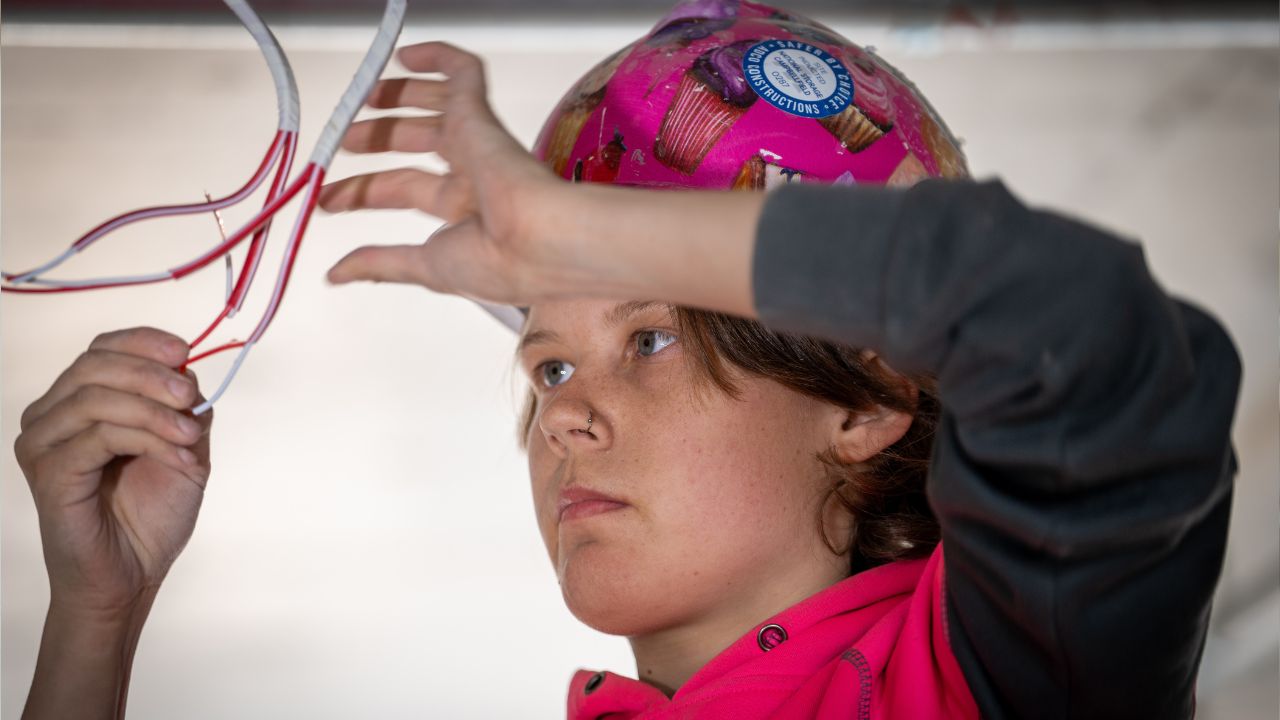Building better workforces for women
We’re investing in better workplaces for women-dominated industries
One in 4 Victorian workers is employed in the care economy or education sector. And women make up 7 in every 10 workers in the education sector, and 8 in every 10 workers in the healthcare system.
The Victorian Government is making sure women’s vital work is recognised and rewarded.
This Budget includes:
- $139 million to expand, develop and support Victoria’s teaching workforce, including financial support for people studying and teaching, as well as professional resources for teachers and school staff. This funding will also support flexible working arrangements in schools, including women.
- $109 million to build and support Victoria’s child protection, nursing and midwifery workforces with scholarships, education pathways and upskilling opportunities.
- A 28% pay increase for Victoria’s nurses and midwives – the largest increase of its kind in Victoria’s history – and $61 million to strengthen nurse to patient and midwife to patient ratios.
The Government is supporting women to work in all sectors of the economy
Ensuring that women have pathways to the jobs of tomorrow provides equal access to opportunity and helps to close the pay gap
We also know that the nature of work is changing. To continue to grow our economy, we need to invest in future workforces now, to make sure we have the skills we need for tomorrow.
That means ensuring that women have equal access to these opportunities – beyond ‘typical’ gender roles and traditional expectations.
Half of Victorian workers are in an industry aligned to traditional gender roles, like women working in healthcare and education or men working in construction and mining.
Overall, 7 in 10 Victorian workers are employed in an industry lacking gender diversity, and 3 out of 5 of Victoria’s largest industries by employment are not gender diverse.
In the next decade, some of the most in-demand jobs will be in the construction and IT sectors, jobs that women have traditionally been under-represented in.
Victoria’s clean economy transition will also create new jobs over the next decade – and many will need Vocational Education and Training (VET) qualifications and STEM skills.
Supporting women into these roles starts early.
By high school, young women report less interest in STEM subjects than young men. Many believe they’re not smart enough to study STEM subjects and see STEM as less important to their future career than young men do.
Encouraging girls to build skills and consider careers in STEM will help Victoria develop the skills we need for the workforce of tomorrow, while supporting girls and women into the higher paying jobs of the future.
That’s why this Budget invests $80 million for education programs that allow Victorian students, including girls, to explore career pathways, including trades and STEM.
This includes:
- $47 million to drive excellence in maths education, increasing the number of maths teachers, upskilling existing maths teachers and funding free advanced mathematics camps for Year 9 and 10 students.
- $25 million to stretch high-ability students through the Victorian High-Ability Program and the Victorian Challenge and Enrichment Series, including online classes, excursions and workshops.
- $9.2 million to continue the expansion of our Tech School network.
We’re also investing in tomorrow’s workforce today, with:
- $171 million to deliver Free TAFE and meet demand for more subsidised training places for Victorians who want to reskill or upskill. This will allow more Victorians, including women returning to work, to access training and improve opportunities.
- $121 million for the TAFE Services Fund which provides support for students to complete their studies and access job opportunities through student support services and asset maintenance.
- $44 million to expand places for literacy, numeracy, digital and other key skills training courses, supporting more women to develop foundation skills and digital literacy and increase their employability.
- $23 million for apprentices and the apprenticeship system, to strengthen the apprenticeship system and help apprentices and trainees to complete their training, including for priority cohorts like women.
- $1.2 million to continue the Rural Women's Leadership and Mentoring program to reduce barriers for women in the agricultural industry and maintain rural health services targeting farming communities.
Breaking down the barriers to economic participation
Affordable and accessible early childhood education and care are integral to achieving equal economic participation for women
While more men are staying home with kids than ever before, it’s still predominately women who take on the role as primary carer.
Not being able to access affordable early childhood education and care can prevent women from returning to the workforce or taking on additional hours. This inequality compounds into lower lifelong earnings and superannuation.
Victoria’s early childhood education reforms are delivering up to 15 hours of kinder a week for 3-year-olds and 4-year-olds across our state. We’re also transitioning 4-year-old kinder to Pre-Prep, which will provide up to 30 hours of play‑based learning a week.
Our investments in Free Kinder are expected to support families of 160,000 children from 2026 – and help more women return to work or study.
We’re also opening 50 government-owned and run early learning and childcare centres. These centres will give families choices based on what’s right for them – not whether or not they can get the childcare they need.
The 4 centre locations that opened in 2025 are:
- Early Learning Victoria Bani Walup in Murtoa.
- Early Learning Victoria Muyan in Sunshine.
- Early Learning Victoria Nyernilang Lar in Eaglehawk North.
- Early Learning Victoria Wimbi in Fawkner.
An additional 14 centres are under construction, due to open next year.
Women are also more likely to provide care for people in their families and community who have health conditions, are elderly or have a disability. Two-thirds of Victorians who report caring for ill or elderly family members as being a barrier to finding work are women.
It’s why this Budget invests $43 million to continue to support children, families and those in the community with disability or complex needs.
Realising equal economic opportunity for women requires addressing barriers for women of all backgrounds
Some women can face multiple and complex barriers to accessing economic opportunity.
Women with disability have lower rates of economic participation and higher rates of unemployment than women without disability.
Similarly, migrant women from diverse backgrounds have lower rates of economic participation and higher rates of unemployment. These women can face additional barriers to accessing childcare and skills and training opportunities, while also being more likely to experience racism and bias.
That’s why in this Budget, we’re further investing to dismantle the barriers to economic inclusion for all Victorians, regardless of their age, ability or background:
- $320 million to complete the statewide rollout of the Disability Inclusion reform to strengthen tailored support for students with disability in Victorian schools.
- $82 million to support students from diverse backgrounds and with complex needs in school through education programs and support.
Updated


